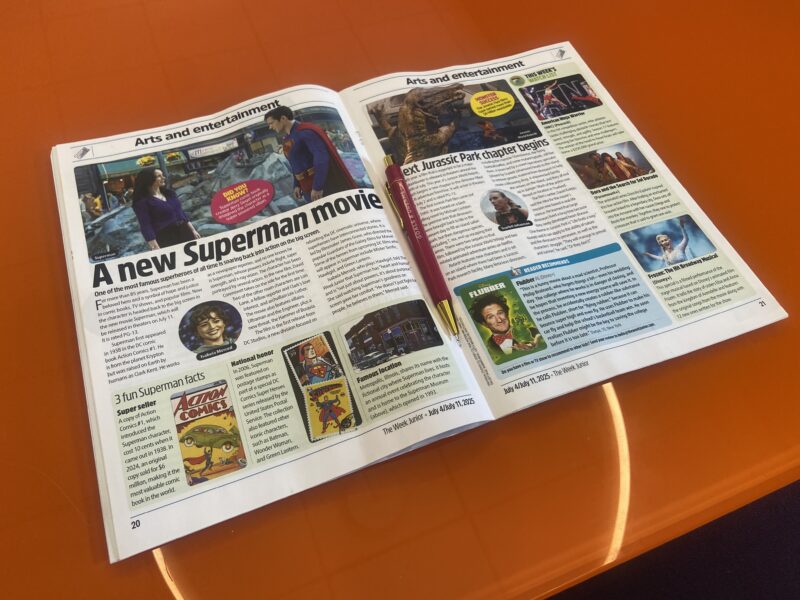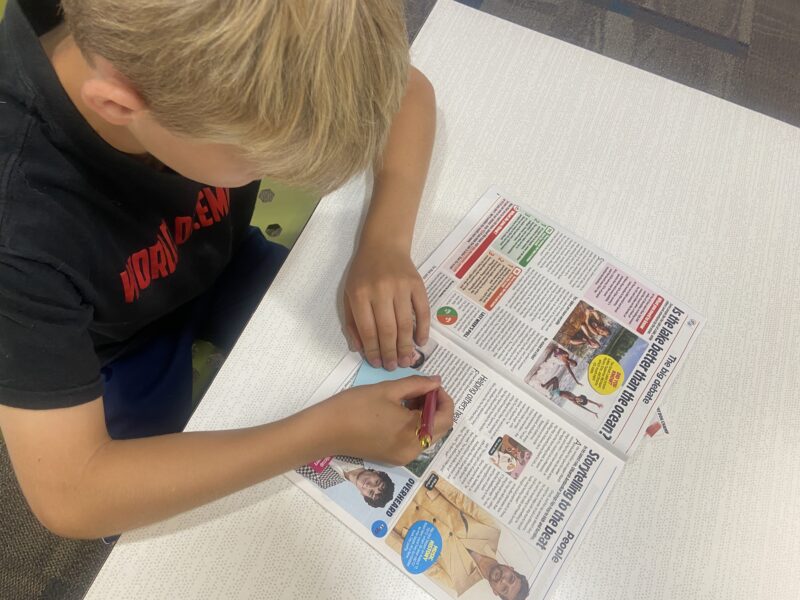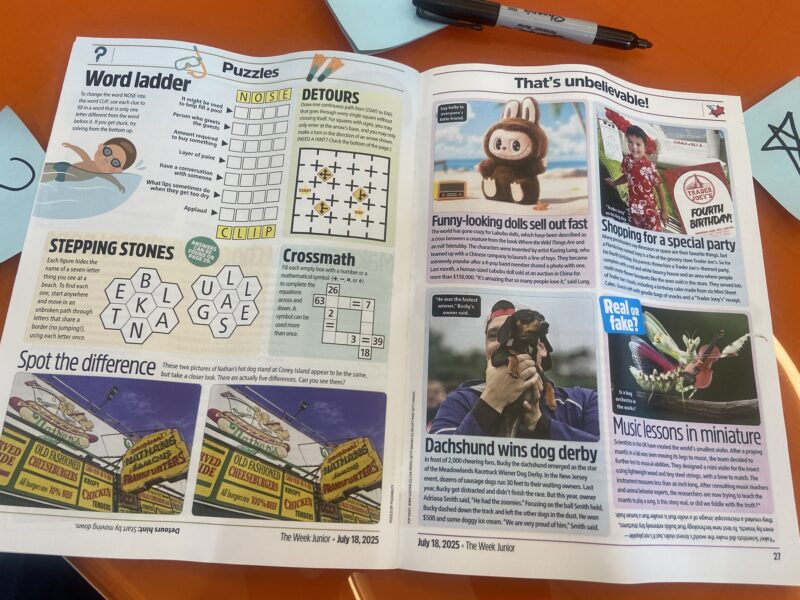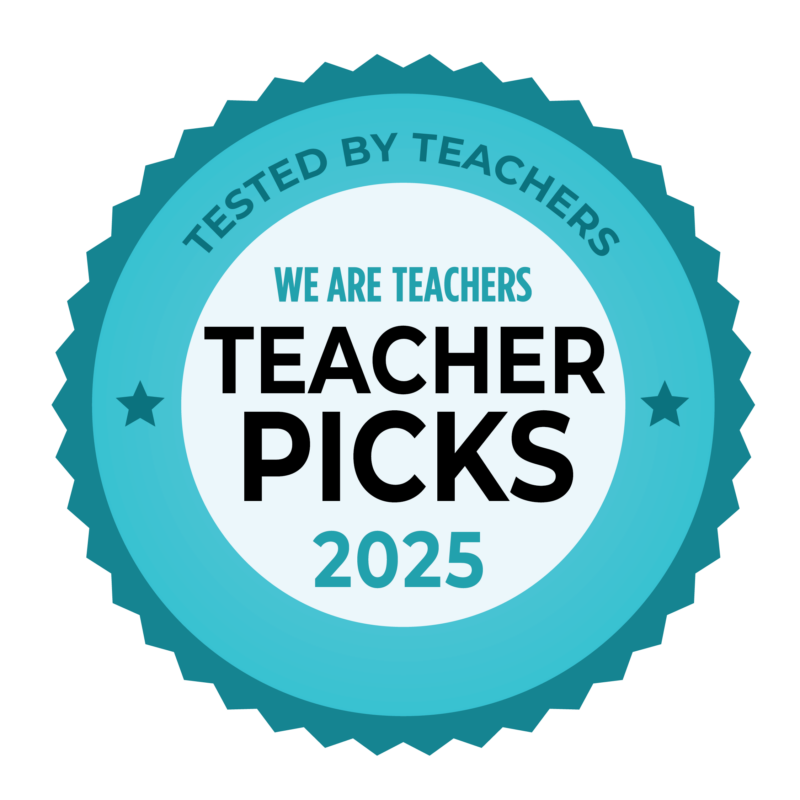In a world where news can often feel overwhelming or inaccessible to young learners, middle grade teachers are finding The Week Junior to be incredibly useful in the classroom. Designed specifically for curious kids aged 8–14, this engaging weekly magazine transforms complex current events into age-appropriate stories that spark discussion, critical thinking, and a love for learning.
Steffy McCourt, passionate middle school English teacher in Canton, Michigan, shares how she integrates The Week Junior into her classroom to build media literacy, foster empathy, and connect her students to the world beyond their school walls. and why she recommends this program for other educators. Here’s her Teacher Picks review:
Why is The Week Junior great for middle grade students?
We get diverse stories and voices in an incredibly engaging way with The Week Junior. The magazines are full of pictures and articles that are timely and in-tune with what middle school students are most interested in, from international news topics to healthy smoothie recipes. Middle school students are interested in it all because they are, after all, figuring out who they are and what they believe in.
Additionally, the stories in The Week Junior are presented in an unbiased way, which means students get to formulate their own opinions and ideas about timely topics. This opens up the opportunity for teachers to model respectful discourse. Seventh graders love a good classroom debate.
Finally, because The Week Junior covers so many topics, it makes cross-curricular collaboration easy-peasy.
How does the magazine align with your standards or curriculum guidelines?
I honestly think it would be more challenging to find ELA standards that don’t align with The Week Junior. So I’m going to focus on the standard that I’m constantly teaching and re-teaching which is how to write an argument. Yep, the good-old Claim-Evidence-Reasoning, otherwise known as CER. Every single week, The Week Junior dedicates at least one page to “The Big Debate.” Questions like, “Is the lake better than the ocean?” or “Is it okay for restaurants to set an age limit?” are deeply explored. Two sides are presented fairly, and students get to decide where they align. Teachers can ask them to write through the argument or talk through the argument. Both activities hit important standards and essentially lead to more organized, logical thinking.

How did you use The Week Junior in your classroom?
Because we live in Michigan, the Great Lakes State, the recent big debate question, “Is the lake better than the ocean?” really stirred up some riveting conversations. The Week Junior launched our thinking by presenting the two sides of the argument and supplying three reasons to support each side. For the YES side, my students began with 1. It’s more fun to kayak or canoe on calm waters. 2. The views from a lake are so beautiful. 3. There are many more lake shores than ocean shores, so it’s easy to get to a lake for most people. I challenged them to dig deeper. They did the research and came back to class with more evidence like, “Swimmers don’t need to worry about shark attacks in a lake.” To take it a step further, I had my students create reels where they had to clearly state their claim, present their reasoning, and explain their reasoning in under two minutes. By incorporating visuals and video that enhanced their argument, they got to practice important skills in media literacy.

What do your students have to say about the magazine?
My students know it’s going to be a fun day in ELA when they see the stack of The Week Junior issues under the whiteboard.
“Do we get to debate today?!” is a question that I’ve preemptively begun to address on the agenda, so that I don’t have to answer it 7 million times. Do they ask anyway? Yes, of course they do.

How easy was it to use and implement in your classroom?
It couldn’t be easier to use and implement The Week Junior in my ELA classroom. The teacher’s guide is easy to read and comes with summaries, content area suggestions (for cross-collaboration), discussion points, graphic organizers, vocabulary lists, suggested activities, and extension ideas. Because of The Big Debate section, I’ve been able to create a seamless system that incorporates practicing argument writing and speaking weekly! My students always make sure that it is on our agenda.
What were the top two features you liked most about The Week Junior?
This is so easy. First, the teacher’s guide, because it gives me time. Instead of digging around for articles and planning, I get to spend time grading or collaborating during my prep. Second, The Big Debate. It’s a part of our week. It is a predictable, and yet, super fun way for students to practice formulating and articulating their own opinions. If it’s not a part of the weekly agenda, then I will hear about it.

What makes The Week Junior special compared to other magazines you’ve used in your classroom?
The Week Junior stands out because it arrives weekly, delivering the most current stories tailored for this audience. Its clear organization makes it user-friendly. The consistent format and structure let us know what to expect each week. Its concise, engaging writing style, crafted for 13-year-olds with TikTok-like attention spans, also sets The Week Junior apart.
How will The Week Junior save you time or make teaching easier?
First, The Week Junior features short, manageable articles that my 7th graders can read independently, allowing me to work one-on-one or with small groups during that time. Second, the shorter, high-interest articles help with pacing. I can easily plan for one 50-minute lesson each week using The Big Debate and a writing or speaking activity. The reading won’t take us a couple of class periods to get through it, because it is always just-right for my students. Finally, The Teacher’s Guide literally does the planning for me, which means I get to be fully present with my kids.
How do you plan to use The Week Junior again in the future?
The Week Junior has become a part of what we do each week. My students and I look forward to it. I plan to continue to use it as a foundation for debate practice and argumentative writing development. I would also like to begin using it for our weekly vocabulary work. I also know there is an opportunity to use the articles as mentor pieces for their own nonfiction writing in the future.
I truly value The Week Junior as a go-to resource in my classroom. It is something that my students look forward to every single week. It helps me make current events and critical thinking a regular part of our routine. I appreciate how The Week Junior writes for this age group, respecting their curiosity and intelligence.
Sign up for a free sample of The Week Junior >>

Teacher Picks is a sponsored program available from We Are Teachers. All opinions shared in the review are honest and based on the teacher’s direct experience. To learn more about our guidelines and review process, click here.


